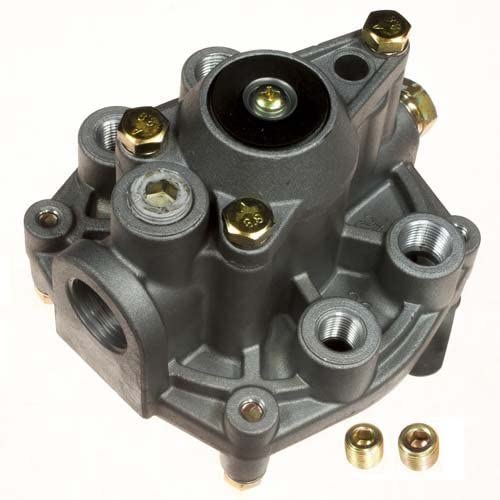
Speed Control & Safety: Protecting Truck Components and Compliance
Speed control is not merely a matter of compliance; it is the fundamental challenge of managing vast amounts of kinetic energy, energy that must be dissipated by a truck's components every time the driver slows or stops. This challenge is magnified by heavy loads and varying terrain, directly impacting the longevity of crucial heavy duty truck parts. Fleet logistics operations must focus on the interconnectedness of electronic limits and mechanical braking response to ensure maximum safety and component lifespan. This focus is particularly urgent as regulatory bodies, such as the FMCSA in the US, move forward with rules in 2025 to mandate electronic speed limiters, forcing fleets to rigorously audit and maintain their electric & electrical parts and braking systems.
The Regulatory and Engineering Mandate
The sheer mass of a fully loaded commercial vehicle means its kinetic energy increases exponentially with speed, dramatically increasing the required stopping distance. This principle drives both safety regulations and engineering design.
The Impact of Mass and Speed
- Extended Stopping Distance: According to data presented in a 2025 Logistics Safety Review, a fully loaded tractor-trailer traveling at 65 mph requires approximately 525 feet to stop in ideal conditions, compared to roughly 300 feet for a passenger vehicle. This delay is compounded by brake lag inherent in air breaks systems.
- Kinetic Energy Management: When traveling at high speeds, the braking system must absorb and dissipate an enormous amount of energy as heat. This heat subjects components like brake drums and brake discs to extreme thermal stress, leading to accelerated wear and potential component failure.
- Compliance Drive (2025): The FMCSA's proposal to mandate speed limiters for commercial vehicles over 26,000 lbs starting in 2025 is a direct response to the safety risks associated with high-speed crashes. This regulatory shift emphasizes the need for compliant and well-maintained electronic and mechanical speed control mechanisms.
Electronic Speed Control: Governing Performance
Speed management begins not with the foot pedal, but with the vehicle's onboard computer systems.
Components of Electronic Control
The primary components governing a truck’s maximum speed are electronic, yet they profoundly affect the mechanical parts:
- Electronic Control Units (ECUs): These are the digital brains that manage engine function. The speed limiter (or governor) is a programmed function within the ECU that restricts fuel delivery or alters engine timing to prevent the vehicle from exceeding a set limit, often between 60-68 MPH as proposed by the FMCSA.
- Transmission and Gearing: The transmission system is crucial for speed management, particularly on downhill grades. Proper downshifting prevents excessive reliance on friction braking. The integrity of transmissions is essential for maintaining control without entering a dangerous "runaway" state.
- Electrical Parts: All speed limiting and stability control systems, including Roll Stability Control (RSC) and Electronic Stability Control (ESC), rely on perfectly functional sensors, wiring harnesses, and the overall reliability of the electric & electrical parts for data transmission and instantaneous control actuation.
Maintenance Challenge: To remain compliant with 2025 regulations, fleets must audit and potentially update the software within their ECUs. Failure to maintain the electronic components can result in non-compliance fines and compromise the integrated safety systems designed to prevent rollovers and loss of control.
Mechanical Control: Braking System Replacement and Wear
Excessive speed acts as a corrosive agent on the braking system, drastically reducing the life of wear components and leading to premature replacement.
Accelerated Wear and Failure Modes
When a heavy vehicle brakes from a high speed, the system must instantly convert a massive amount of kinetic energy into heat. This conversion process directly impacts the replacement cycle for friction materials.
- Brake Pads and Linings: Driving at high speeds can cause brake pads and linings (part of brake shoes, linings & kits) to wear out up to 20% faster for every 10 MPH driven over 50 MPH, according to industry studies. The intense heat generated causes the friction material to deteriorate more quickly, necessitating earlier and more frequent replacement.
- Thermal Stress on Drums and Discs: Excessive speed leads to brake overheating, which can cause the brake drums to warp or the brake discs to crack. Warped components reduce braking efficiency, leading to a "spongy" feel and, in worst-case scenarios, total brake failure, increasing the demand for replacement brake calipers & kits and associated rotors.
- Slack Adjusters and Brake Valves: The repeated, aggressive braking necessary to control speed puts extra strain on mechanical components. The precision required of slack adjusters and the rapid cycling of brake valves are stressed by high-energy stops, making their proper function critical for even braking across the axles.
The primary maintenance challenge is ensuring that all braking components, including the air breaks system, are routinely inspected for thermal damage and wear depth, allowing for proactive component replacement before safety margins are compromised.
Speed and Dynamics: Terrain, Load, and Component Strain
The effects of speed are not constant; they are highly influenced by the vehicle's payload and the geometry of the road.
Load and Stopping Distance
- Heavy Load Momentum: A fully loaded truck (up to 80,000 lb GVWR) carries significantly more momentum than an empty truck. An empty tractor-trailer may stop in around 300 feet from 55 mph, but the same vehicle fully loaded can require 450–525 feet. This dramatic difference means that even slight speed increases are magnified into hundreds of feet of extra stopping distance when carrying heavy loads.
- Grade Resistance: Downhill grades convert potential energy into kinetic energy, effectively making the truck accelerate without driver input. Speed control on a steep grade requires the sustained use of engine braking and intermittent service braking. This scenario subjects brake discs and brake drums to the highest thermal loads. If the speed is too high entering the grade, the mechanical brakes can fail due to overheating (brake fade), jeopardizing the truck parts specialist's commitment to safety.
Stability on Curves
Excessive speed on curves dramatically increases the centrifugal force exerted on the suspension parts and tires. This can exceed the friction limits of the tire and the vehicle's rollover threshold, increasing the risk of severe accidents. Maintaining optimal suspension alignment is vital, as a compromised system cannot effectively manage the forces of high-speed cornering.
All Truck Parts: The Solution for Speed Management Components

As a truck parts supplier and one of the heavy duty truck parts manufacturers with ISO/TS16949 certification, All Truck Parts Limited provides the critical component quality necessary to manage the extreme kinetic energy inherent in heavy vehicle speed control.
All Truck Parts contribution to reliable speed management includes:
- Certified Braking Components: Supplying high-quality brake discs, brake drums, and brake calipers & kits designed with materials capable of withstanding the high thermal stress generated by emergency and high-speed braking, ensuring reliable heat dissipation.
- Pneumatic System Integrity: Providing robust air breaks and brake valves that guarantee rapid, consistent application of braking force across all axles, a non-negotiable factor in emergency stopping scenarios at speed.
- Compliance Support: Offering reliable electric & electrical parts and compatible components essential for the proper function of ECUs and mandated electronic speed limiting systems.
By prioritizing manufacturing quality and providing durable, safety-critical components, All Truck Parts enables fleet managers to maintain strict speed control protocols, reduce premature component replacement, and ensure compliance with evolving safety regulations.
Conclusion
Speed control is the ultimate test of a truck's entire system, tying regulatory compliance to the physical limitations of its components. From the electronic governor in the ECU to the thermal capacity of the brake discs, every component plays a role in managing the massive kinetic energy of a fully loaded vehicle. For trucking fleets, investing in quality, certified truck parts from a trusted heavy duty truck parts manufacturers is the only way to ensure that the vehicle can maintain safety margins, especially when confronted with the compounding challenges of high speed, steep terrain, and heavy loads. A proactive maintenance schedule focusing on brake wear and electronic system integrity is the best strategy to prevent component failure, avoid regulatory fines, and safeguard human life on the road.




